
Boys play on scaffolding that is holding up the wall of the Hanuman Dhoka Palace on Durbar Square in Kathmandu, a UNESCO World Heritage Site badly damaged in the 2015 earthquake.

Workers rebuilding one of the Hindu temples in Bhaktapur's Durbar Square. Bhaktapur, a popular tourist destination and one of the most historic cities in Nepal was also one of the hardest hit cities in the earthquake.
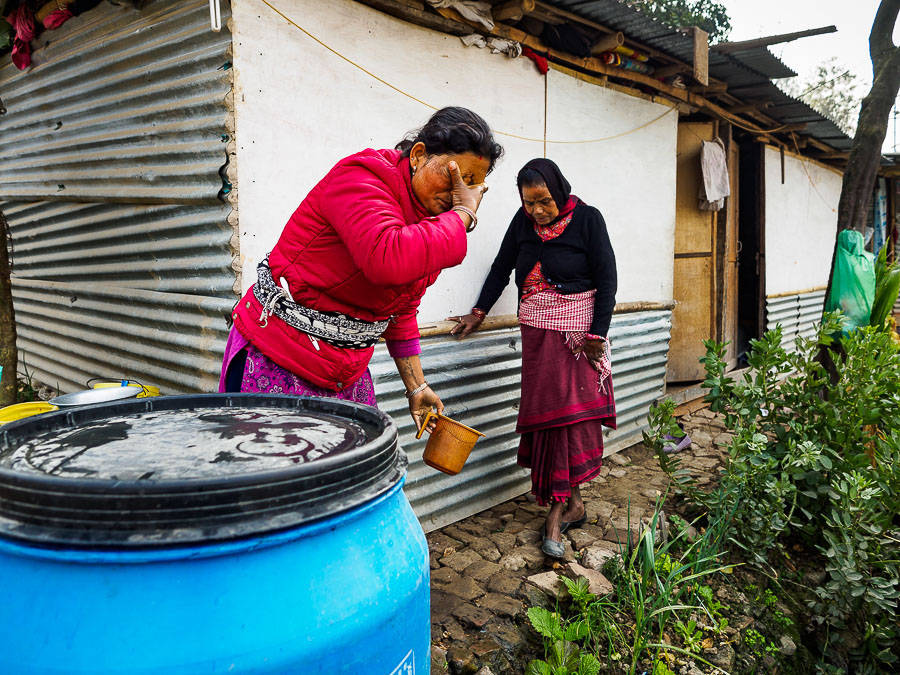
A woman washes her face next to her temporary shelter, provided by a NGO after the 2015 earthquake. She's been living in the shelter with her family for nearly two years.

A man washes up in front of his temporary shelter in an informal IDP camp in Bhaktapur. He's been living in the temporary shelter with his family for nearly two years.

A man in Khokana sits on a stool in the middle of a road in front of his temporary shelter. His home was destroyed in the 2015 earthquake.

A man washes his dishes in front of the shelter he lives in at an IDP camp in Khokana. His home was destroyed in the 2015 earthquake.

A street dog in Khokana walks by a stack of bricks that will be used to rebuild homes destroyed in the 2015 earthquake.

Laborers use hand tools to dig out a home in Bungamati destroyed in the 2015 earthquake.
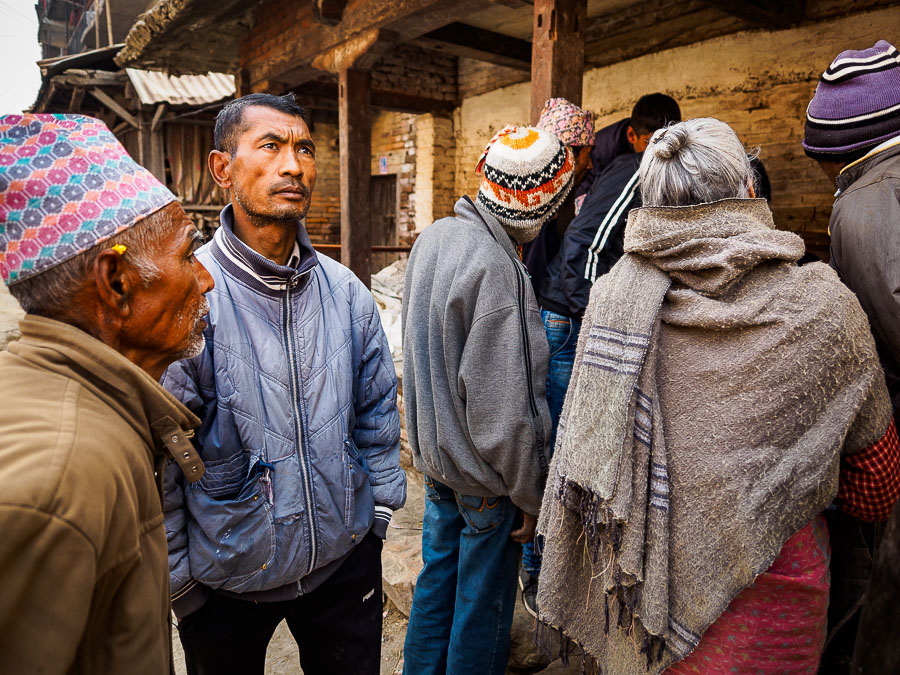
People line up in Khokana to meet with Nepal government officials who helped them apply for financial assistance for rebuilding homes destroyed in the 2015 earthquake.

A woman spins wool to make blankets in an IDP camp in Khokana. Her home was destroyed in the 2015 earthquake.

A man walks past temporary shelters that have taken on an air of permanence after homes in Bungamati were destroyed in the 2015 earthquake.

A laborer fills a basket with gravel for a home being rebuilt in Sankhu after the 2015 earthquake. The building on the right is a 300 year old home that is no longer usable and will be torn down.
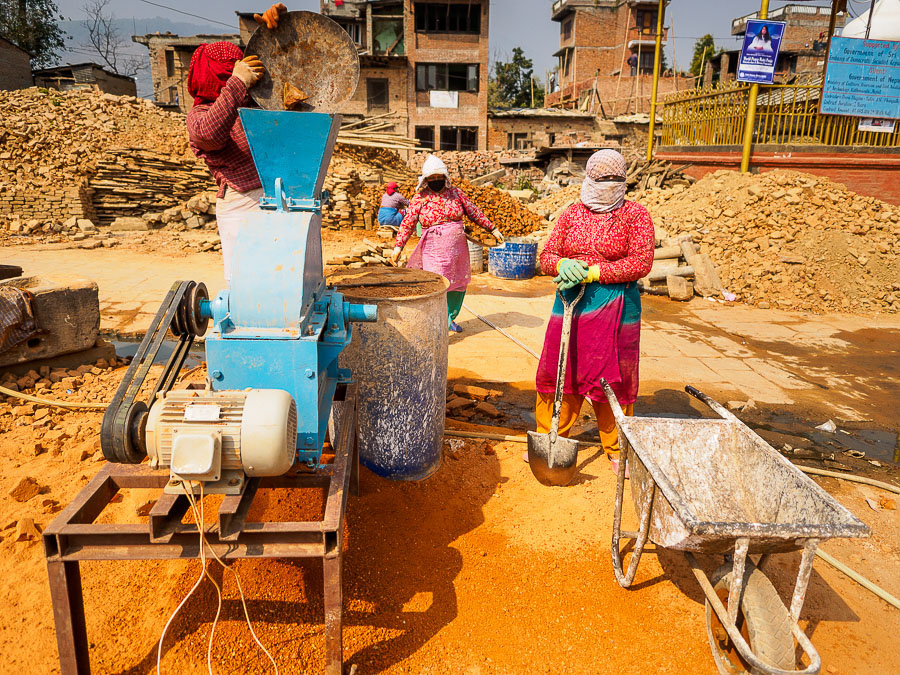
Laborers work to rebuild the Rato Machindranath Temple, a 13th century Hindu temple destroyed in the 2015 earthquake. The temple was the most important structure in Bungamati and the center of community life.

Workers in Bungamati sort kapok (used in mattresses and cushions) in front of homes destroyed in the 2015 earthquake.

Women do their laundry at a public water tap in front of a storage depot for construction and rebuilding supplies in Sankhu.

A woman digs by hand through a home in Bhaktapur destroyed in the 2015 earthquake.
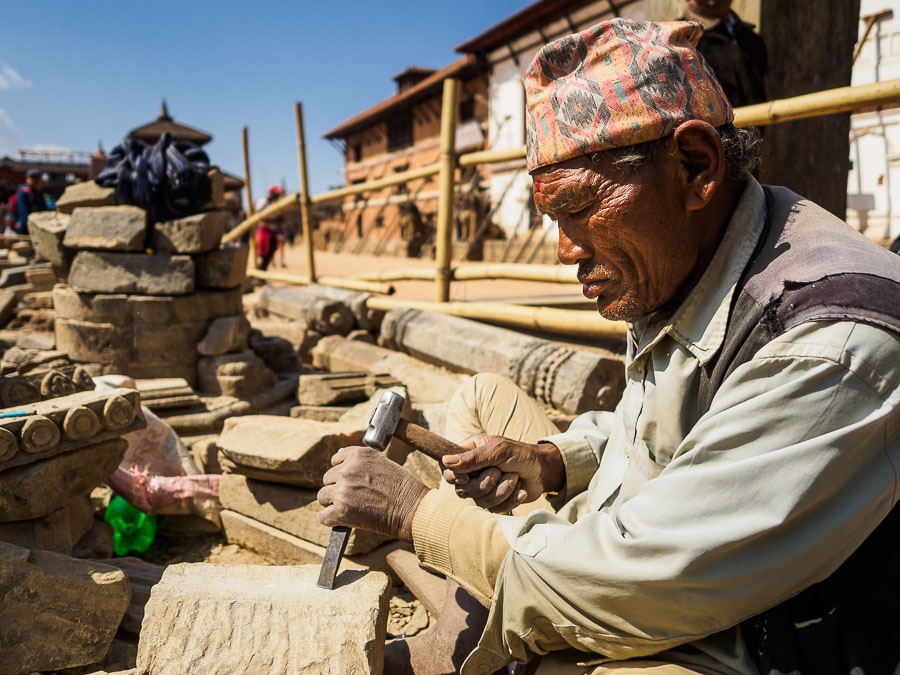
A Nepali craftsman carves stones that will be used in a Hindu temple in the reconstruction of Bhaktapur's Durbar Square.

A woman's son plays while she does her laundry in front of her tent in an IDP camp in the center of Kathmandu. The camp was shut down and the tents and shelters burned down by the government in mid March.

A family from rural Nepal warms themselves by an open fire in an IDP camp in the center of Kathmandu. The family lives in an unheated tent. The nighttime low in Kathmandu is about 8C (45F) in March.
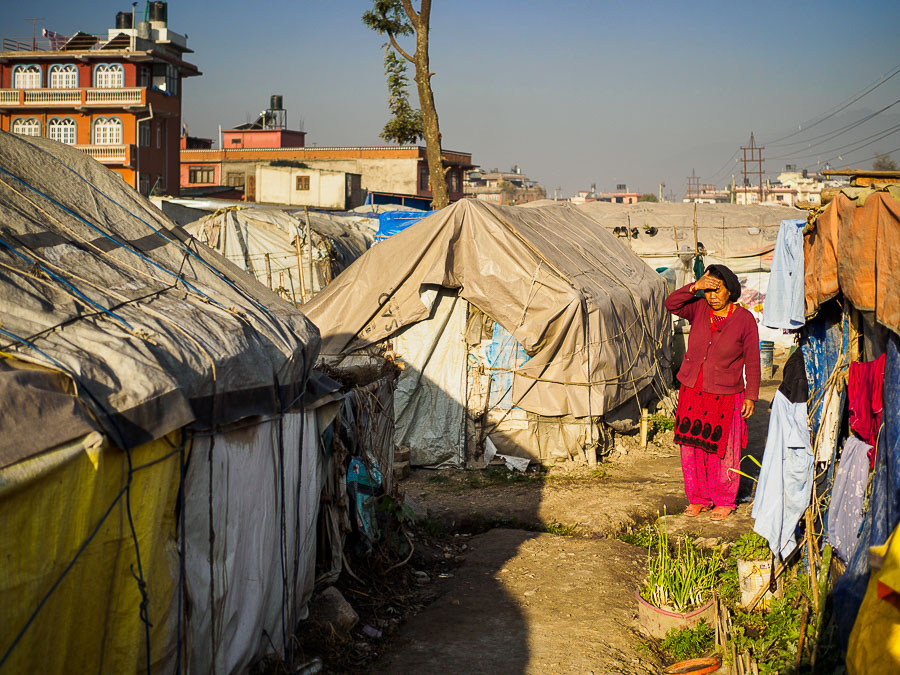
A resident of an IDP camp in the center of Kathmandu walks through the camp.

A woman from rural Nepal cleans her tent in an IDP camp in the center of Kathmandu. Her husband found work on a chicken farm about 90 minutes from Kathmandu and lives at the farm, coming back to the camp one night a week.

A woman hangs her laundry in an IDP camp in the center of Kathmandu.

A Nepali Sherpa woman in an IDP camp in the center of Kathmandu puts on her traditional clothes before going to a Tibetan New Years ceremony at a Buddhist temple about 10 miles from the camp.

A worker hands a tray of cement to a coworker on a construction site that is rebuilding a building near Kathmandu's Durbar Square destroyed in the 2015 earthquake.

Workers on a project to rebuild ancient Hindu temples in Patan's Durbar Square. Much of historic Durbar Square was badly damaged in the 2015 earthquake.

A worker takes a break on the project to rebuild ancient Hindu temples in Patan's Durbar Square.

A dog in front of a home damaged in the 2015 Nepal earthquake in Bungamati. Bungamati, a community of wood carvers and artisans, used to be a stop on the tourist trail of the Kathmandu valley but since the 2015 earthquake few tourists visit the community.
At 11:56 AM on April 25, 2015, the earth under the mountainous country of Nepal shuddered and heaved, killing thousands and devastating one of the poorest countries in Asia. The earthquake was an 8.1 magnitude tremor, the worst disaster to befall Nepal since an earthquake in 1934.
Two years after the earthquake, devastated neighborhoods in Kathmandu and Patan have started the long, slow rebuilding process. Nepal is a poor country - it's most plentiful natural resource is the people of Nepal and most of the reconstruction is being done by hand. Heavy equipment is in short supply.
The ruins of buildings are excavated by hand. Materials for rebuilding are transported by hand. Women carry bricks, cement, and sand are carried to job sites in baskets on their backs. Wood is recycled from the ruins of destroyed buildings.
The earthquake was two years ago, but rebuilding has barely begun. It looks like it will be a never ending process.
There are more photos of Kathmandu after the earthquake in my archive.



